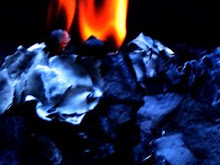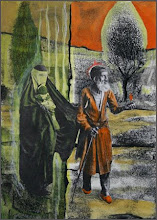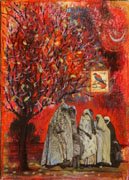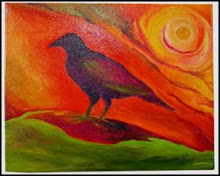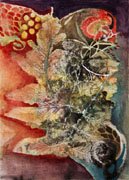
The colorful and dynamic ceremonial attire of the native peoples of the Florida Everglades is instantly recognizable. The patterns are evolving into more and more complex work even while referencing antique forms based on the natural environment.
Patchwork designed skirts, “ohoone”, are the traditional attire for Seminole and Miccosukee women, to be worn for the New Year ceremony known as the Green Corn Dance. Before the arrival of Europeans, Woodlands Indians from the Northeast to the Southeast participated in this ritual.
The Green Corn Dance is held to mark the height of the new growing season. Taking place during the new moon phase of the “Everything Growing Moon”, which usually falls around the end of June or first of July. It is a time of purification and cleansing, as well as a celebration of a year of new life. The ceremony itself extends over several days and involves dancing, singing, and a ritual ballgame.
Besides the sacred nature of this ceremony of renewal, it is a social time for the local Native community to see and be seen in dazzling and colorful patchwork clothes. The women have been making skirts and jackets for themselves and their families all year long. Until fairly recently a Seminole or Miccosukee adult woman may require three or more long skirts to be properly attired during the duration of the event. This was very costly in terms of material and time required to produce such elaborate work.
Many young people today favor jeans and tee-shirts with a small amount of patchwork on a hat or jacket, although many are making simple patchwork articles to sell to tourists.
As each year’s dance ritually requires new clothing, ones from previous years serve no ceremonial purpose. More care is taken in design and execution in clothing produced for family than patchwork made for the tourists passing through the reservations.
These skirts were collected after they had been worn for the Green Corn Dances of the 1970s and 1980s. Names of the makers were recorded when that information was available but the Miccosukee are very private and sometimes reluctant to divulge that information.
The beauty and aesthetic appeal of the dazzling patterns prove them to be a collectible, traditional Native American art form. The creation of complex patchwork patterns with mosaic- like fragments of cloth is labor-intensive work that is admired and seen as expression of identity within the Miccosukee and Seminole communities. It is also highly appreciated by other Native American peoples and textile lovers around the world.
To see examples and learn more please visit my web site www.deborahgarnercollection.com.
Go to Textile Arts/ Americas















